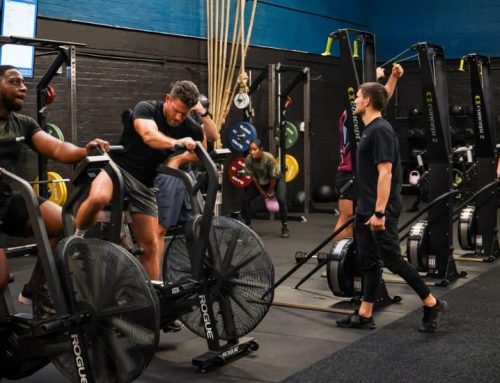Have you ever noticed that your head sits very far forward even when you try to sit up straight? Well, you’re not alone. This condition, known as “forward head posture” or “nerd neck,” is becoming more and more common.
Forward head posture can cause a whole host of issues for your neck and back. You must take steps to correct nerd neck as soon as possible.
Coming up, we’ll discuss the basics of forward head posture and what causes it. Then, we’ll offer some top tips for correcting nerd neck for a happier, healthier spine.
What Is Forward Head Posture?
Forward head posture is a condition where your head sits further forward than it naturally should. Nerd neck is usually coupled with a rounded upper back (kyphosis) and slouched-forward shoulders.
Forward head posture is a type of “postural deviation.” In theory, your head should sit in alignment with the rest of your neck and back. When this happens, your body is aligned with it’s natural “gravity line” or “plumb line.” This is an imaginary line that follows the regular downward pull of gravity on our bodies.
When our head sits further forward than it should, it throws our body’s alignment out of whack. If this happens, gravity starts to put added pressure on our head and neck, which can lead to a variety of long-term health problems.
Why Is Forward Head Posture Bad?
Our head and neck are two of the most important parts of our body. While sitting around with your head a bit further forward than it should be might not seem like a huge deal, forward head posture is something you certainly want to avoid.
Why you might ask? Well, here are some of the many issues that can develop as a result of nerd neck:
Muscle Group Imbalance
When your head sits further forward than it should, this can cause muscular imbalances between your neck, head, and shoulders. Eventually, this can cause the muscles on the front side of your body to weaken. This also means that the muscles on the back of your neck can shorten, tighten, and easily strain.
Kyphosis
Kyphosis is the fancy medical term for a rounded back. Also known as a “humpback,” kyphosis is any forward curvature of the spine beyond 45 degrees. However, kyphosis is different from scoliosis, which is when the spine curves from side to side.
Kyphosis is dangerous because it can cause back pain, weakened muscles, nerve problems, and life-long deformity. It can also put pressure on the lungs, which can make regular breathing incredibly difficult, according to a 2019 Japanese study.
Neck Pain
Neck pain is, well, a significant pain in the neck. A 2018 study from researchers in South Korea found that people with forward head posture often experience pain when moving their neck.
Forward neck posture is directly connected to neck pain. In fact, Amy Devaney, a physical therapist at Massachusetts General Hospital, states:
For every 10 degrees forward the head is from a neutral position, the weight of the head on the neck increases about 10 pounds. This can place a great deal of strain on the muscles, ligaments, joints, and invervetebral discs in the neck. (Source: Harvard Health)
So, it’s no wonder that having forward head posture can cause long-term neck pain.
What Causes Forward Head Posture?
For the most part, forward head posture is caused by bad habits that we develop over time. Nerd neck can occur when we spend too much time staring at a computer or craning our neck to look down at a cellphone.
But, technology isn’t all to blame. People can even develop forward head posture from spending a lot of time reading, sewing, or driving. Alternatively, some people get nerd neck from routinely carrying a heavy weight on the front of their body, like a young child.
Correcting Forward Head Posture
Thankfully, it is possible to fix forward head posture if it’s caught early enough. Many medical professionals suggest a mix of exercises and lifestyle changes to fix bad neck posture. Here’s what you need to know:
Exercises To Correct Forward Head Posture
Forward head exercises are one of the best ways to fix nerd neck. If you want to improve your neck posture, consider the following exercises:
- Cervical retraction. While sitting up in a chair that’s pushed against a wall, tuck your chin slightly toward your chest. Press the back of your head into the wall to achieve a nice stretch on the back of the neck. Hold the stretch for a few seconds and repeat 20-30 times.
- Pectoral Stretch. This exercise helps to open up the chest muscles, which can improve your overall posture. To do this stretch, stand against the corner of a wall. Bend your elbow 90 degrees and keep your arm parallel to the floor. Place your palm and forearm against the wall and lean forward for a gentle stretch. Hold for 5-30 seconds and repeat 2-3 times.
- Head Turn. While sitting upright or standing, turn your head to one side until you feel a good stretch. Hold the position for 5 seconds and then repeat on the other side.
- Chin Tuck. Stand with you back against the wall. Tuck your chin down and pull your head back. Hold this stretch for 5 seconds and repeat up to 10 times to strengthen your muscles.
Other Tips For Improving Neck Posture
In addition to exercise, you can make some small lifestyle changes to help improve your neck posture. Here are some options:
Avoid Heavy Backpacks
Whenever possible, avoid carrying a heavy pack until your posture improves. This is particularly important if you’re not used to carrying heavy weights on your back.
If you’re a keen backpacker, you can still enjoy doing what you love. But, be sure your backpack fits you properly and is adjusted to bring the weight of your pack as close to your body as possible.
Use The Right Pillow
If you’ve ever woken up with a sore neck after sleeping in a weird position, you understand the importance of a quality pillow. If you’re a side sleeper, Harvard Health recommends a firmer pillow. But, if you sleep on your stomach or your back, a softer pillow is generally best for neck alignment.
Don’t Roll Your Neck
Rolling your neck can cause your bones to grind together, which both sounds and is bad. Stretch your neck instead of rolling it.
Create A Better Workspace
Since many cases of forward head posture are caused by working on a computer, creating a more ergonomic office can make a big difference. Your computer should be at eye level, and your feet should be well supported on the floor for a better overall posture.
Avoid Bending Your Neck For Too Long
Frequently change your head and neck position to keep your eyes looking straight ahead – not downward. If you’re reading, try using a pillow to prop your arms up to put your head in a neutral position.
Set An Alarm
If you spend a lot of time at a desk, try setting the alarm for every 45 minutes so you can get up and stretch. This can be a great way to fix your posture and reduce nerd neck.
Get Professional Help
If you have a severely arched back (or neck pain that lasts for more than two weeks), you should consider getting help from a medical professional. Usually, this will involve taking some images of your neck and then some physical therapy. It’s essential to stop forward head posture before it deteriorates into something more serious, especially if you already have a pre-existing condition, like arthritis.








Leave A Comment